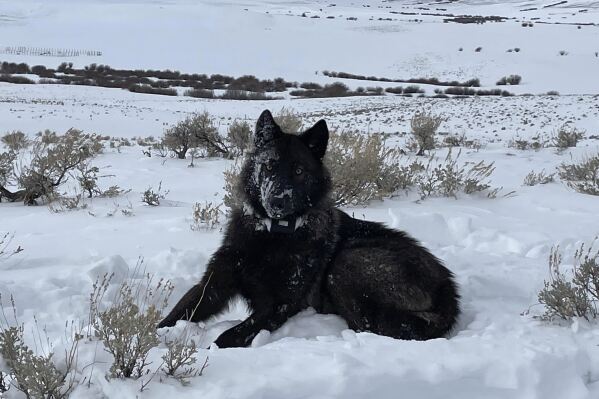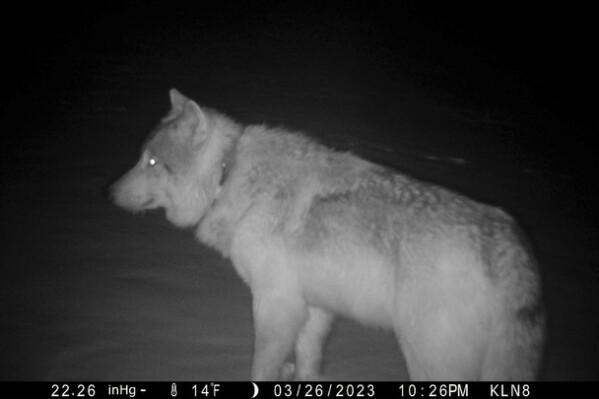US wildlife managers capture wandering Mexican wolf, attempt dating game ahead of breeding season
ALBUQUERQUE, N.M. (AP) — A match made in the wilds of New Mexico?
An endangered Mexican wolf captured last weekend after wandering hundreds of miles from Arizona to New Mexico is now being readied for a dating game of sorts as part of federal reintroduction efforts.
But only time will tell whether the U.S. Fish and Wildlife Service can succeed in finding a suitable mate for the female wolf numbered F2754. The newly captured wolf will be offered a choice among two brothers that are also housed at the federal government’s wolf management facility in central New Mexico.
“We wanted to bring her in earlier so that she has a longer chance to bond with a mate and then hopefully successfully breed,” said agency spokeswoman Aislinn Maestas. “We’re going to be observing her and waiting to see. Hopefully, she does show interest in one or the other.”



It could be late February or early March before biologists know if their efforts are successful.
It has been 25 years since Mexican gray wolves were first reintroduced into the Southwestern U.S. Through captive breeding and targeted releases, wildlife managers have been able to build up the population of what is the rarest subspecies of gray wolf in North America.
Despite fits and starts, the numbers have trended upward, with last year marking the most Mexican gray wolves documented in Arizona and New Mexico since the start of the program.
Federal and state wildlife managers had been tracking the lone female wolf for months, waiting for an opportunity to capture her again. Her journey began in the mountains of southeastern Arizona and crossed the dusty high desert of central New Mexico before reaching the edge of Valles Caldera National Preserve.
She spent weeks moving between the preserve and the San Pedro Mountains. After showing no signs of returning to the wolf recovery area, officials decided to capture her before the start of the breeding season.
Their opportunity came Saturday near the rural community of Coyote, New Mexico. A helicopter crew working with the New Mexico Game and Fish Department shot her with a tranquilizer dart and then readied her for the trip south to the Sevilleta Wolf Management Facility.
It was about the well-being of the wolf, said Brady McGee, the Mexican wolf recovery coordinator.
“Dispersal events like this are often in search of a mate. As there are no other known wolves in the area, she was unlikely to be successful and risked being mistaken for a coyote and shot,” he said in a statement.
Officials said the goal is that the match-making efforts net pups in the spring and more wolves can be released to boost the wild population.
The recovery area spanning Arizona and New Mexico is currently home to more than 240 of the endangered predators. There also is a small population in Mexico.
Environmentalists had pushed federal managers to let the solo female wolf be, pointing out that previous efforts to relocate her were unsuccessful following her first attempt to head northward last winter. They also pointed out that the wolf’s movements were evidence that the recovery boundaries are insufficient to meet the needs of the expanding population.
“I think what we can say is that we know wolves are driven towards dispersing as a way towards mating with non-related wolves. In the case of Mexican wolves, those unrelated mates are increasingly hard to come by because of the level of inbreeding in the population and the narrow band of Arizona and New Mexico where wolves are allowed to be,” said Greta Anderson, deputy director of the Western Watersheds Project.
Ranchers in New Mexico and Arizona have long complained that wolves are responsible for dozens of livestock deaths every year and remain concerned about any expansion of the wolves’ range. Rural residents in Colorado are joining them as officials plan to release gray wolves there in the coming weeks.
Disclaimer: The copyright of this article belongs to the original author. Reposting this article is solely for the purpose of information dissemination and does not constitute any investment advice. If there is any infringement, please contact us immediately. We will make corrections or deletions as necessary. Thank you.





